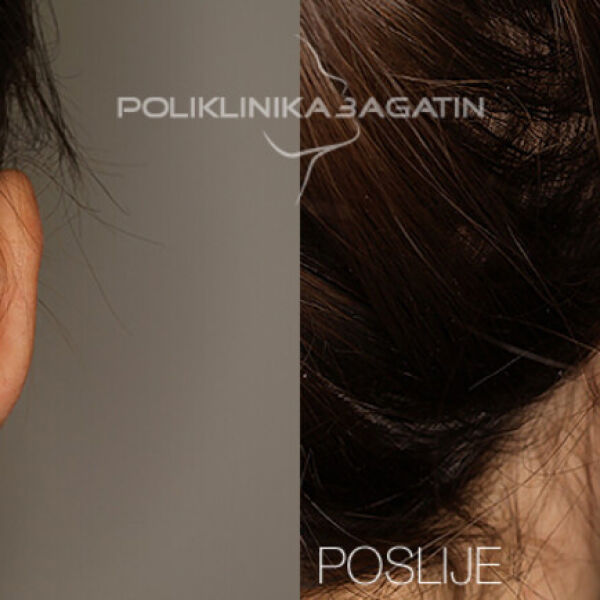Ear surgery (otoplasty)
About
Ear correction, also known as otoplasty, is a surgical procedure used to correct protruding or irregularly shaped ears to achieve balance and aesthetic harmony of the face. This procedure may involve reshaping the ear cartilage and adjusting its position to achieve the desired aesthetic outcome.

Candidate
Candidates for ear correction typically include individuals with protruding or irregularly shaped ears that disrupt facial balance or cause discomfort to the patient. This procedure can be beneficial for patients seeking to achieve symmetry and harmony in the shape and position of their ears.
Preparation
Before otoplasty, patients will consult with a surgeon to understand the goals of the procedure and potential outcomes. Preoperative preparation may involve medical examinations and evaluations to ensure safety during the surgery.
Treatment
During otoplasty, the surgeon will access the ear through small incisions and reshape the cartilage to reduce protrusion or correct irregular ear shape. The goal is to achieve a natural appearance of the ear that harmonizes with the other facial features.
Result
The results of ear correction typically involve achieving symmetry and a natural position of the ears in relation to other facial features. This procedure can provide patients with increased self-confidence and satisfaction with the appearance of their ears.
Precautions
After otoplasty, it is important to follow the surgeon's instructions to reduce the risk of complications and achieve successful recovery. Regular visits to the surgeon for progress monitoring and proper wound care are also important for achieving optimal results.
F.A.Q.
Otoplasty is a surgical procedure used to correct the shape or position of the ears. It is usually performed through an incision on the back of the ear, where the cartilage is accessed. The surgeon can reshape, reduce, or adjust the cartilage to achieve the desired aesthetic result.
Generally, the recovery period after otoplasty lasts a few weeks. The ears will be wrapped in a dressing or special bandage for the first few days to provide protection and support. Patients should avoid activities that may cause injury or excessive stretching of the ears. Swelling and bruising are common but will gradually diminish over time.
Generally, otoplasty is performed under anesthesia, so patients should not feel pain during the procedure itself. After the surgery, some discomfort, swelling, or mild pain in the ear area may be experienced. Your surgeon may prescribe appropriate medications to alleviate pain and discomfort during the recovery period.
Yes, otoplasty is commonly used to correct ears that are too protruding or have other shape deviations. The surgeon can adjust the cartilage and other ear structures to achieve the desired shape and symmetry.
Like any surgical procedure, otoplasty carries certain risks. These may include infection, bleeding, wound healing issues, ear asymmetry, temporary or permanent decrease in ear sensation, or unsatisfactory aesthetic results. It's important to have thorough discussions with your surgeon regarding expectations, potential risks, and postoperative care to minimize potential complications.
The results of otoplasty are usually long-lasting. Once the ears are properly shaped and positioned during the surgery, the changes are permanent. However, it's important to note that the normal aging process may affect the appearance of the ears over time.
Otoplasty is the most common and effective procedure for correcting ear shape. Alternative methods include wearing specialized ear-shaping devices or non-surgical techniques that can temporarily change the appearance of the ears. However, these alternatives usually do not provide permanent results like otoplasty does.
Otoplasty is typically performed after the ears have fully developed, which is usually around 5 years of age. However, this age limit may vary depending on the individual case. It's important to consult with a qualified surgeon to determine the optimal age for otoplasty.
Surgeons typically make incisions on the back of the ear, so scars are usually less visible. Depending on the individual case, the scars should be minimal and gradually fade over time.
The duration of otoplasty surgery can vary depending on the complexity of the case, but it usually takes between 1 and 2 hours. It's important for the surgeon to have enough time to precisely shape the ear and achieve the desired result.
Before & After
Photos


Send an inquiry for the treatment
Start your way towards a successful treatment today. Fill out the form with your data, choose the service you need and we will connect you with the top medical experts in Zagreb.